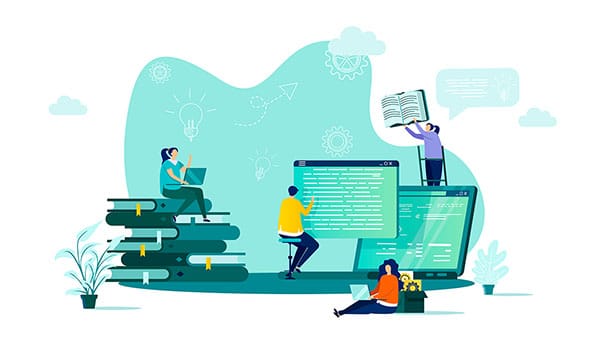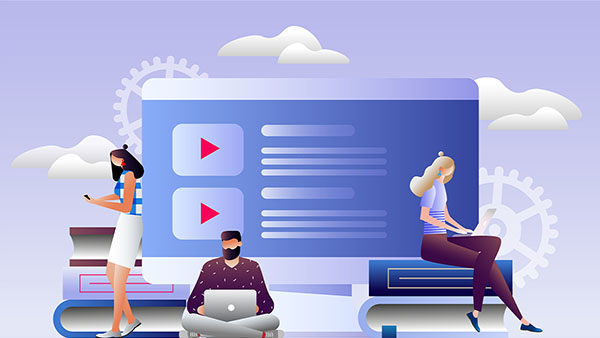How to Develop a Learning Management System: 5 Steps and Estimated Cost
A learning management system (LMS) is an essential online platform for delivering educational and training content to students and employees. Developing an LMS is a strategic undertaking requiring thoughtful planning, skillful technical implementation, and user-centric design. This article provides an overview of key steps and considerations when building a custom LMS, along with estimated costs to hire LMS developers who will create your innovative solution.
Step 1 – Define LMS Goals, Features and Audience
The first major step is determining the core goals, must-have features, and target users for your LMS. Key questions to address include:
- What are the primary learning objectives you want the LMS to support? For example, employee compliance training, higher education courses, customer product training, continuing education, etc.
- What functionality is needed to service those goals? Assess must-have features like courses, quizzes, discussion forums, grading systems, gamification, mobile access, and more.
- Who are the primary audience(s) and what are their technical capabilities? Understanding learner demographics and digital literacy is crucial.
- What volumes of users, courses, and content do you need to support now and in the future as you scale? Plan for growth.
- How will the LMS integrate with existing organizational systems like HR software, student information systems, payment gateways, or content repositories?
- What level of customization and branding is required to align to your organizational culture? White-labeling the platform may be desired.
Defining these requirements will inform the technical architecture and platform decisions down the line. Spend time upfront determining specific use cases and priorities.
Step 2 – Choose LMS Technology Architecture
Once requirements are defined, choose the technology architecture that best aligns with your resources and goals. Here are three main options that exist for delivering a learning management system
Buy a Prebuilt SaaS Platform
Buying a hosted software-as-a-service (SaaS) LMS is the fastest way to get started if speed is critical. SaaS platforms are accessible via web browser and maintained on the vendor’s infrastructure, reducing your IT lift. However, customization may be limited. Pricing scales are based on the number of users. Examples of SaaS LMS vendors include Cornerstone OnDemand, Docebo, Bridge, Litmos, etc.
Customize an Open-Source LMS
Mature open-source LMS platforms like Moodle, Canvas, Sakai, and others can be freely downloaded and then customized to suit your needs. While you avoid software licensing fees, your team needs to handle installing, updating, securing, and managing these platforms on your own servers. Open source allows more control over capabilities at the cost of increased responsibility. Most support some level of additions and UX modifications.
Build a Custom LMS
For maximum flexibility and customization, you can build a fully custom LMS tailored to your organization’s very specific requirements and workflows. However, this demands more time and technical expertise compared to configuring an off-the-shelf system. You control the features, integrations, and codebase when building in-house but lose vendor support services.
Assessing your implementation timelines, feature needs, IT capabilities, and budget will determine if buying, customizing, or building is the best path. Plan for scalability from the start if growth is expected.
Step 3 – Design an Intuitive LMS User Experience
However, your LMS is assembled, and designing an intuitive, consistent user experience across the platform is crucial for driving adoption and satisfaction. Some best practices for optimizing UX include:
- Onboarding – Make it easy for new users to find, enroll in, and start using courses quickly with minimal steps required. Account self-service is ideal.
- Course catalog – The course search function should enable learners to filter and find relevant content quickly. Browsing by category, popularity, rating, and other facets is helpful.
- Learning paths – Guide users to the next logical learning progression steps based on past course completions or defined curricula. Adaptive learning personalizes recommendations.
- Mobile optimization – A mobile-responsive UI and offline download options improve accessibility and convenience for busy learners.
- Communication – Incorporate social tools like messaging, discussion forums, and groups for peer learning and connecting course participants.
- Assessments – Allow different assignment types and automated or manual grading/feedback workflows based on needs. Certificates mark course completion.
- Dashboards – Learners should be able to easily track their overall progress and performance across courses and assessments in one place.
- Accessibility – Support diverse abilities through features like screen reader capability, keyboard shortcuts, and alternative texts for visuals.
Gathering feedback via focus groups, surveys, and usability testing is highly recommended to refine the interface and maximize user adoption.
Step 4 – Develop LMS Following Best Practices
If opting to build a custom LMS, experienced application developers are instrumental. Some common technologies used for LMS platforms include:
- Front-end – HTML, CSS, JavaScript frameworks like React or Angular
- Back-end – Server-side programming languages like PHP, Python, Ruby, Java, .NET
- Database – Relational DBs like MySQL or NoSQL databases for scalability
- Media hosting – Integrations with cloud storage services like Amazon S3 for content assets
- Mobile – Native iOS and Android mobile apps
Following modern software best practices helps ensure a robust, secure, and scalable LMS:
- Modular architecture with reusable libraries and microservices
- Responsive design and mobile-first development
- Utilizing frameworks and third-party integrations instead of custom-coding everything
- Continuous testing and improvement processes
- Cloud hosting for flexibility, performance, and cost efficiencies
Typical LMS integrations include payment gateways, HR systems, content repositories, and analytics dashboards. Strong security measures like role-based access controls, SSL encryption, and compliance with regulations like GDPR are mandatory as well.
Step 5 – Test and Iterate the LMS
Once development is complete, comprehensive testing across browsers, devices, and usage scenarios is critical to catch bugs and UX issues before go-live. Load testing will reveal if system performance holds up under projected peak demand.
Piloting the LMS with a small group of friendly test users helps get real feedback to refine things based on how learners truly interact with the platform. Plan to gather user analytics and feedback continually post-launch to drive ongoing enhancements and adoption.
Estimated LMS Development Costs
LMS project costs ultimately depend on the scope, technology choices, customizations required, and location of team. Some general guidelines on cost range:
- SaaS LMS platform – $5,000 to $50,000+ annually based on users
- Open-source LMS implementation – Tens of thousands for customization
- Custom LMS build – $50,000 to $500,000+
With clear requirements and an experienced technical team, an LMS can be built cost-effectively to precisely match an organization’s needs. But the investment pays off through effectively engaging and advancing your learners via an optimized experience.
In summary, developing a successful LMS requires aligning technology decisions to strategic learning goals and putting user-centric design front and center. With adequate planning and execution, your organization can deploy an LMS that delivers transformative training and education over the long-term.

